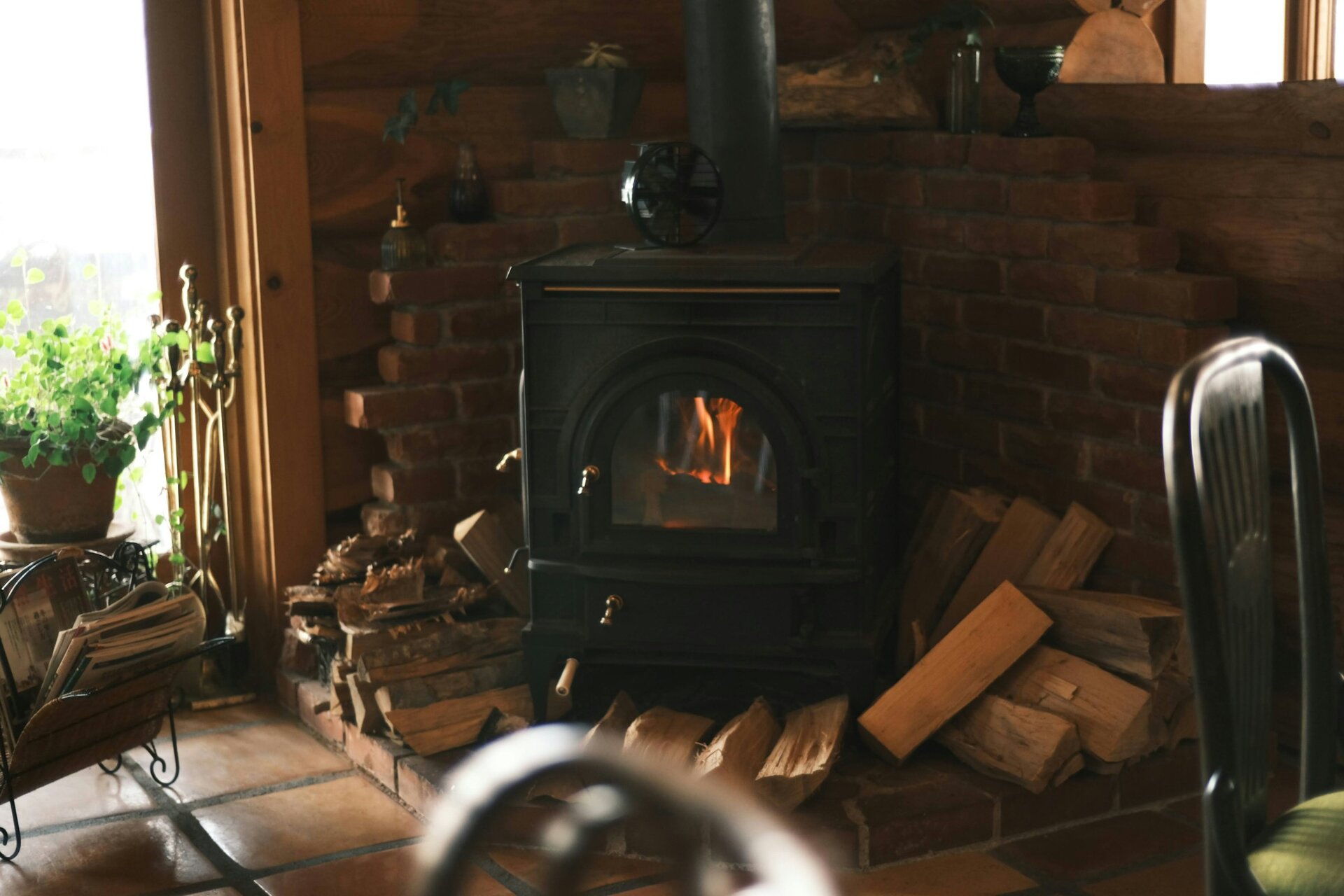
Wood Fuels for Heating: Pros, Cons and Environmental Impact
We are reader-supported. When you buy through links on our site, we may earn affiliate commission.
Wood fuels have provided humans with a renewable heat source for thousands of years. Discover how this natural material impacts the environment, how you can use it as an alternative home fuel source and its pros and cons.
What Are Wood Fuels?
Wood fuels are flammable materials derived from natural wood such as firewood, charcoal, briquettes, wood chips, pellets and sawdust. They are a traditional fuel source and have been used throughout millennia by different civilizations. Wood fuels are commonly used for space and water heating in fireplaces, furnaces, boilers and heaters. Some of the earliest uses of wood fuels can be traced back to fires built inside tents and stone hearths in caves.
Wood fuels can be harvested from cutting trees and gathering logs, processing wood wastes like shavings, sawdust and other similar biomass sources. They are primarily renewable since trees are replenishable with environmentally responsible harvesting and planting practices. Wood fuels are an alternative energy source to fossil fuels since they provide direct heating or electricity through direct burning or efficient combustion.

What Are Examples of Wood Fuels?
While wood is the most widely used combustion fuel for space and water heating, other types of wood fuels are available on the market. Here are several examples and their characteristics.
- Logs and firewood: Logs are simple to use and source since they can be harvested directly from nearby woodlands or bought from wood dealers. Homeowners can use seasoned firewood in their fireplaces, heaters and boilers to provide warmth to their homes. Logs can also serve as fuel for traditional stoves in homesteads.
- Wood chips: Smaller and easier to store and transport, wood chips are an excellent fuel alternative for many homes. Homeowners can use wood chips to fuel boilers since they burn efficiently due to their uniform shapes and sizes. Wood chips are also suitable for automatic feeding into boilers, creating an efficient home heating system.
- Wood pellets: Made from dry, compressed sawdust, wood pellets offer a free-flowing fuel alternative to logs and firewood. They are smaller than wood chips and can be bought by tanker loads for bulk storage. Wood pellets burn cleaner and are more energy-dense than most wood fuels available in the market.
- Briquettes: Biomass fuel sources are gaining popularity due to their versatility and eco-friendly characteristics. Briquettes made from wood shavings are popular among homeowners who want a cleaner burning wood fuel source that is relatively easy to transport and store. They have a more consistent burn and can replace logs in fireplaces but may lack the look and feel of traditional firewood.
- Charcoal: Another biomass fuel, charcoal is created through carbonizing wood through a slow heating process. Charcoal burns more efficiently than wood, providing warmth and another fuel alternative. However, charcoal can produce a lot of smoke and is better suited for vented heating systems.
What Are the Advantages of Wood Fuels?
Wood-derived fuels hold many advantages over fossil fuels. Here are some of them.
Availability
Wood fuels are readily available. They can be harvested from nearby woodlands created from wood byproducts or wastes. Firewood, chips, pellets and briquettes are also widely available in stores and dealers. Many woodworking companies sell their leftover wood pieces, shavings and sawdust to biomass manufacturers.
Affordability
They are also relatively cheaper than oil and gas, making them a budget-friendly option for homes and businesses. They provide ample heating when used in efficient combustion systems like converted coal boilers and heaters.
Sustainability
Wood fuels are more sustainable than fossil fuels because they come from renewable natural sources like forests, woodlands and waste. Responsibly managed forests and eco-friendly harvesting practices create a sustainable source of wood.

More Eco-Friendly
Trees absorb and capture carbon dioxide from the atmosphere as they grow. As natural carbon sinks, they can offset the carbon emissions from burning wood throughout their lifecycle. Growing trees also provide nurturing natural habitats for a variety of wildlife.
Ashes from wood-burning stoves and fireplaces are a good fertilizer alternative. Homeowners can gather ash from their heating systems and use them for gardening.
Versatile
Wood fuels are a versatile alternative to oil and gas. Different types of wood products can power boilers, heaters, stoves and fireplaces and add a homey feel to any living space. Many manufacturers still produce wood-fueled heating systems for domestic and commercial buildings.
What Are the Disadvantages of Wood Fuels?
Like any fuel source, harvesting and burning wood for heating has disadvantages. Here are several of them.
Environmental Concerns
Burning wood fuels produces soot and smoke, which are health and environmental hazards. Emissions from wood-burning systems emit carbon dioxide and other chemicals that contribute to global warming. These emissions threaten local communities, ecosystems and wildlife habitats with constant and excessive combustion.
Other negative environmental impacts come from deforestation and illegal logging. The constant demand for wood fuels can exacerbate severe deforestation in developing countries, mainly since illegal loggers don’t replenish the forests they harvest firewood from.

Inconvenience
Wood-fueled heaters are more inconvenient than gas and oil-powered heating systems because they require constant filling. Maintaining heat in cold areas and seasons requires consistent effort. Automated filling systems are available but require an initial investment to install. Log-fueled heaters often require manual labor and are less convenient for homeowners and building maintenance teams.
Maintaining traditional fireplaces can also be a hassle for less experienced homeowners. They require additional cleanup due to ashes, leftover firewood particles and residue. Chimney fires can also pose health risks and fire hazards, creating the need for annual servicing and seasonal maintenance.
Storage Requirements
Logs, wood pellets, chips and briquettes require ample physical space for proper storage. Many firewood dealers also use kilns to dry firewood, adding to carbon emissions. Small households must find a storage solution for their fuel of choice to stay warm during colder months.
Wood Fuels: A Viable Natural Fuel Alternative
Although wood heaters can be messy and require constant refilling, they provide many benefits for homeowners willing to put in work. They are relatively more affordable than oil and gas, have carbon offsetting properties and are a viable option for centralized heating even for modern homes.
Share on
Like what you read? Join other Environment.co readers!
Get the latest updates on our planet by subscribing to the Environment.co newsletter!
About the author
Maria Visser
Maria serves as the Assistant Editor of Environment.co. A true foodie and activist at heart, she loves covering topics ranging from veganism to off grid living.





